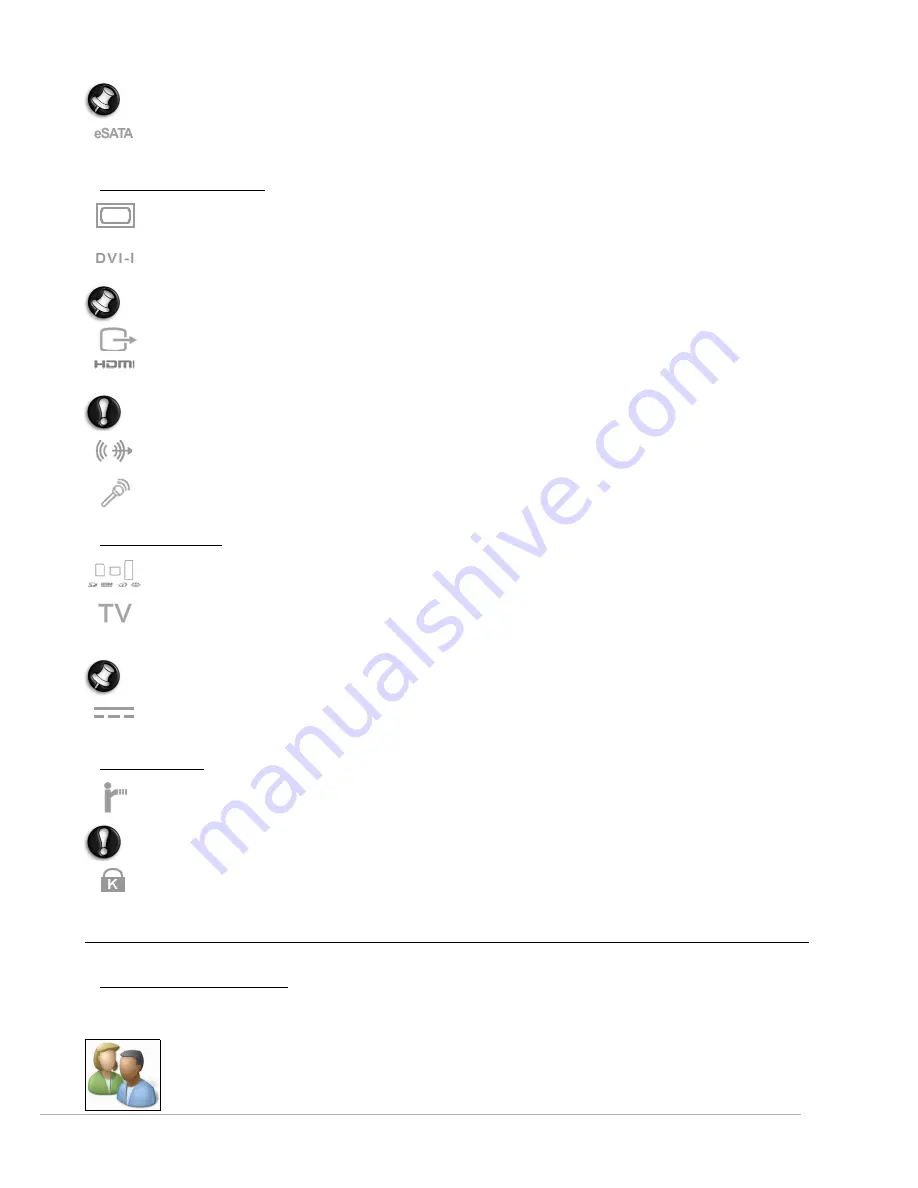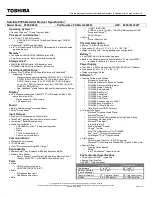
Computer Basics -
13
Note:
It is not possible to use a PC Card device in an ExpressCard slot.
eSATA - An eSATA port allows you to connect a compatible external storage device (usually a hard disk
drive) with a high-speed SATA connection.
Display and Audio Ports
VGA Port - Connect to a monitor with a VGA port. The appropriate cable is usually included with the
monitor.
DVI Port - Connect to a monitor with a DVI (Digital Video Interface) port. The appropriate cable is usually
included with the monitor.
Note:
Many monitors use a 15-pin analog connection, so you may need to purchase an adapter or a DVI-to-
Analog cable.
S-Video (TV-Out) Connection - An S-Video TV-Out port allows you to connect a compatible television.
HDMI (TV-Out) Connection - An HDMI TV-Out port allows you to connect a compatible display device (such
as a high-definition television) with a single, easy-to-use connector.
Caution:
If you want to use your television's speakers, you must change the audio output or connect
the Line-Out port of your computer to your television (or a speaker system).
Line-Out - Lets you plug in stereo headphones or powered speakers. Plugging in an audio device
disables any built-in speakers.
Microphone - Allows you to connect an external microphone for mono recording or amplification
through the unit. Plugging in an external microphone disables the built-in microphone.
Other Connectors
Memory Card Reader - Memory cards are used to store and transfer data by a wide selection of digital
cameras, PDAs, MP3 players and mobile phones (see page 9).
TV Tuner - Allows you to connect an aerial and watch analog or digital television on your computer (see
page 19). An adapter may be required to connect to an aerial - if your computer features two TV tuner
ports, use a splitter cable to connect both ports to an aerial.
Note:
The TV tuner must be compatible with signals in your area.
AC Adapter (DC In) - Lets you attach the computer to the the supplied AC adapter. The computer requires a
Gateway-certified adapter.
Other Features
Remote Control Receiver - The remote control receiver (Commercial IR) allows you to control the media
functions of your computer from a distance when used with a compatible remote control (optional).
Caution:
The sensor is not an 'full' IR port and can only receive signals from a remote control. It
cannot be used to communicate with other devices, such as mobile telephones.
Kensington Lock Fixture - This fixture allows you to attach a Kensington security lock or other compatible
lock to protect your computer from theft.
Turning your Computer ON or OFF
Turning your Computer ON
1. First, switch ON any devices connected to your computer by pressing the main power button on these devices.
2. Then switch ON your computer by pressing the main power button.
To share the family computer and have your own system settings every time you turn on the
computer, you can set up accounts for each user. You can access and modify your accounts at any














































